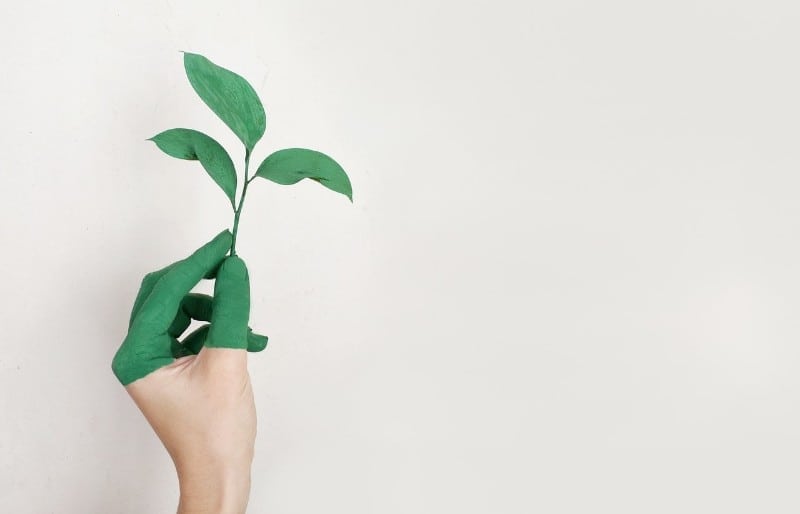It’s no secret that cultivating cannabis indoors is a high-energy endeavor. Lighting, ventilation, and automated processes are taking a heavy toll on electricity consumption. An energy analyst at the University of California, Berkeley found that the annual greenhouse gas pollution from the indoor cannabis industry is comparable to putting roughly 3 million more cars on the road.
Some industry experts feel, despite the current climate for cultivators, that the marijuana industry could become a global leader in sustainable practices. We spoke with The Cannabis Conservancy Co-Founder and Director of Science and Sustainability Jacob Policzer to learn how the industry is working toward a greener future.
Cannabis & Tech Today: How does sustainability in cannabis differ from other agricultural industries?
Jacob Policzer: There are a couple of ways. I guess, the biggest one is that you’re growing a pretty hardy plant, typically indoors, and there’s nothing like that going on in the world. People are growing crops that make financial sense, like micro greens, leafy vegetables, and things like that, but not a proper plant that will take months and months to grow.
That was a big issue that we wanted to tackle. We didn’t want to just reward the outdoor growers who are obviously going to have a much smaller energy impact, but create a framework and a toolbox that indoor growers can use to gradually become better and better.
C&T Today: How can a cultivator obtain a Sustainability Certification from The Cannabis Conservancy?
JP: First on the list would be to read through our standards, which are published on our website in our effort to be completely transparent. Then they would contact us and we would conduct an interview to see where they are and what they’re doing.
We’re really trying to meet growers where they’re at, then we want them to demonstrate progressive improvement. Incremental implementation and progressive improvement are really what we’re looking for. It’s kind of like the backbone of ISO 14001, which we use a lot to structure our standards.
They would fill out a self-assessment form that we would then review, which would give us a good understanding of where they are in compliance with our seven pillars. Then if there’s no corrective actions needed, we would go and schedule an audit. Then one of our auditors would go out to the farm and audit them based off of our standards. Then that gets reviewed again, and if there’s no corrective actions, then they would be certified for a year.
C&T Today: How does The Cannabis Conservancy Sustainability Certification differ from an organic certification?
JP: You need to grow organic to get our certification, so that component is the same for both. Our certification just goes beyond that. I find that with most of the organic certification there is potential for unintended consequences, such as an increased fuel use or greenhouse gas emissions, since they’re not using pesticides, or just an increased cost in compliance because you’re using organic fertilizers that are usually more expensive.
You’re not necessarily paying attention to what your water use is, your waste generation, your energy usage, your social, how you’re treating your workers, all the ethical implications of it, and we really wanted an all-encompassing, holistic perspective for our certification.
C&T Today: Do the standards for certification vary from state to state or country to country?
JP: As of right now, they do not. The idea is that our standards set the goal. We define the line on practices, but not how to achieve those practices, so they are being achieved in different ways depending on the location.
We noticed the industry wasn’t quite ready for what we were presenting. We were a little early to the market in that respect, so for the first year we are requiring the growers to measure and monitor what their environmental impacts are. That way they’ll have the data and the information to be able to make informed decisions in the future and ultimately reduce their impacts year over year.
That doesn’t change regardless of where the grow is located or how they’re growing, but what you’re seeing is people are reducing their resource use using a lot of different methods, depending on where they are and how they’re growing.
Every indoor grow is going to be completely different, from the equipment they’re using to whether they’re trying to recapture their water or minimize their water usage, how they’re saving energy, how the employees are actually operating the grow … It all varies by operation, but the principles are all the same.
For more insights from Policzer, read his full interview in the summer 2018 issue of Cannabis & Tech Today. To learn more about The Cannabis Conservancy and how you can obtain a Sustainability Certification, visit their website.
Author
-

Patricia Miller is an executive editor at Innovative Properties Worldwide. She explores science, technology, and policy shaping the legal cannabis sector. Follow her work when you subscribe to Cannabis & Tech Today at cannatechtoday.com/subscribe/ or visit her website https://patriciamiller.squarespace.com/.






